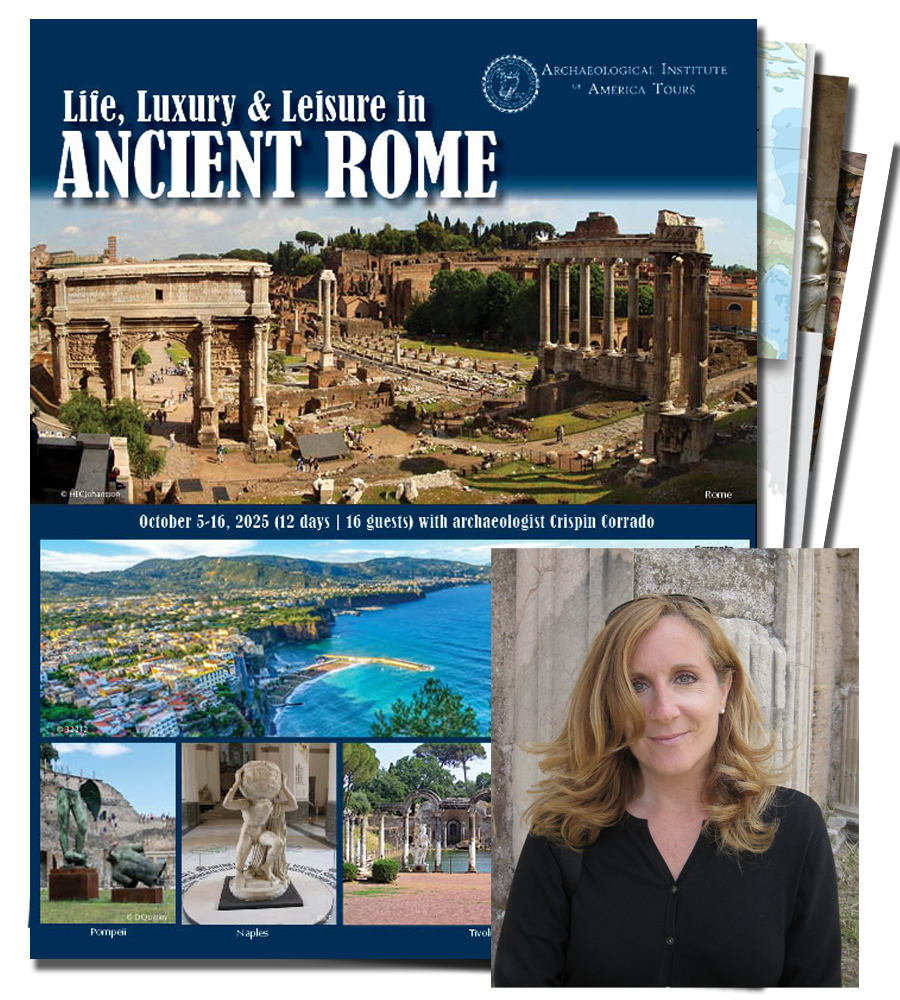Immerse yourself in the opulence and grandeur of ancient Rome while uncovering the secrets of daily life, the indulgence of luxury, and the pursuit of leisure that helped to define one of the most influential civilizations in history. Our adventure begins in Rome, heart of the Roman Empire, where we witness the architectural marvels that stand as a testament to Rome’s engineering prowess. At the Baths of Caracalla, learn about the interesting Roman bathing culture and the significance of these communal spaces in Roman society. Delve into the world of luxury in ancient Rome with visits to the opulent villa in Tivoli and the well-preserved remains of ancient cities frozen in time by the eruption of Mount Vesuvius. Learn about the daily lives and customs of the Romans through beautifully preserved frescoes and artifacts, as well as the exquisite art, landscaping, and leisure pursuits enjoyed by the Roman elite.
Throughout the tour, archaeologist and professor Crispin Corrado will guide the group at many sites, offer several lectures, and be available to engage in discussions. Whether you are an avid archaeology or history enthusiast, or simply curious about one of history’s greatest civilizations, this journey will provide a deep understanding and appreciation of ancient Rome’s enduring legacy.
Highlights include:
- A custom-designed, well-paced itinerary with five nights in central Rome, two nights in Naples, and three nights in Sorrento
- Visits to several UNESCO World Heritage Sites:
- Spend a full day exploring Rome’s ancient monuments, including the Roman Forum, the House of Augustus on the Palatine Hill, the Domus Aurea, and the Colosseum
- Enjoy a day trip to Tivoli for visits to Hadrian’s Villa, a 2nd-century A.D. complex; and the Villa d’Este, a Renaissance masterpiece of garden and villa architecture
- Explore Pompeii and Herculaneum, both of which were buried (and preserved) by the eruption of Mt. Vesuvius in A.D. 79; as well as Villa Poppea (Oplontis), an ancient villa with incredible wall paintings
- The collections of Rome’s Capitoline Museums, with magnificent Classical and Renaissance art; the awe-inspiring Pantheon; and the superb Naples Archaeological Museum
- Carefully selected, 4- and 5-star hotels that are well-located for some independent exploration
- Our group size is limited to 16, and you will also be accompanied by a professional tour manager/guide who will handle the details so you can relax, experience, and learn
Tour Pricing (10 nights):
Per person, double occupancy
13-16 participants $9,595
11-12 participants $9,995
Single Supplement $2,645
*Single room supplement will be charged when requested or required. With fewer than 11 participants, a small-group surcharge may be added.
To reserve your space using the online form, click here.
For reservations or questions, please email us at aia@studytours.org (and include your full name) or call us toll-free at (800) 748-6262 (toll: 603-756-2884). Download the brochure for complete details.
